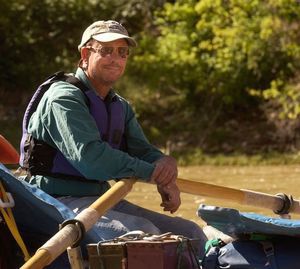Health, drought, floods and sediment are the reasons why communities build water infrastructure for consumptive use from surface water and groundwater supplies. Managing surface water typically involves grandiose and expensive projects managed by powerful, centralized bureaucracies. Fortunately, the water system for Moab/Spanish Valley is simple, inexpensive and of high quality. Others in the Colorado River basin could never be so lucky and, hopefully, thoughtful planning and zoning ordinances will keep it that way.
After the infrastructure was built, our population in the arid lands increased, droughts were mitigated, rivers remained within their banks (most times), and sediment … well, we actually haven’t solved that problem quite yet, because our infrastructure wasn’t designed to bypass silt and aggregates to their eventual resting place, the deep basins of the ocean. But, as the Bureau of Reclamation likes to remind us, that is another subject for another time. This, incidentally, is an acknowledgment that the people of the present get the solutions and benefits, and the people of the future receive the problems and the costs.
In the 1960s, the seven states of the Colorado River basin and the federal government knew that the water management paradigm of the Colorado River basin was headed for trouble. They actually recognized that a 2 million acre-feet deficit would materialize in the beginning of the 21st century, and that is exactly what transpired. They also acknowledged that an action plan would take at least 30 years to implement, but they failed to take action until 2007. Unfortunately the measures the water managers accepted in 2007, will only erase 25 percent of that 2 million acre-feet deficit.
Here is the take-home message I wish to share with you: Since the water managers did not adapt to the hydrology of the past 50 years, how could they possibly adapt to the hydrology of the next 50 years? If you do accept global warming as real, then this hydro-society has to perform double duty to balance the water budget. If you don’t accept global warming, a duty to balance the water budget is still imperative. So when do we start?
Last month, the Bureau of Reclamation informed the water users that by the end of September 2017, the combined capacities of Lakes Mead and Powell will probably be about 58 percent. An annual gain of about 13 percent since the previous September of 2016, when the combined capacity of the two reservoirs was only 45 percent. This year’s gain of 13 percent is not very comforting when factoring the previous 17-year average annual deficit of 19 percent into the water budget equation. The bottom line remains: The surplus of water the basin once enjoyed is gone, and the vulnerability to shortages remains.
A percentage number that does not seem to ever float around in the regional news is the minimum capacity of the combined reservoirs needed to honor hydropower contracts and public laws that protect water quality. That percentage number is 20 percent. Thus, when the combined capacity of Lakes Mead and Powell reaches 20 percent, lawsuits potentially arrive on the scene. Not only will the lawsuits arrive from electric power distributors and conservation groups, they will also potentially arrive from the holders of senior water rights, which include farmers and the sovereign nations (Indian Nations and Mexico). These are the legal conflicts that John Wesley Powell foretold to the water planners over 120 years ago. Again, when do we start to adapt to the climate we accept?
John Weisheit is the Colorado Riverkeeper and lives in Moab.



